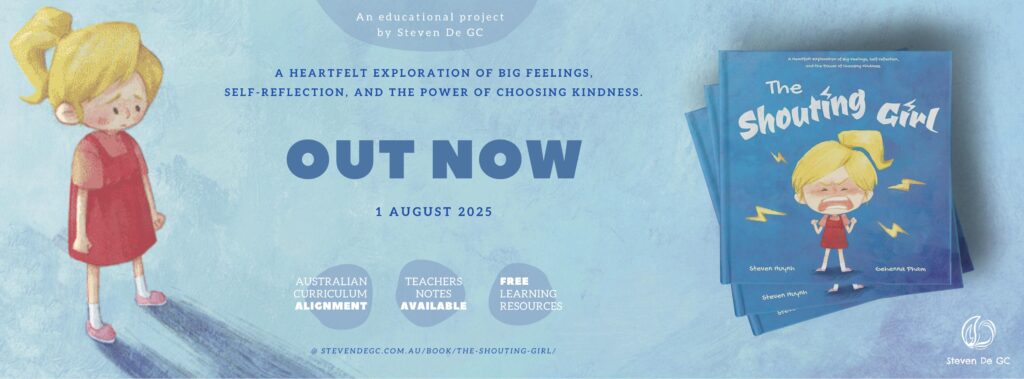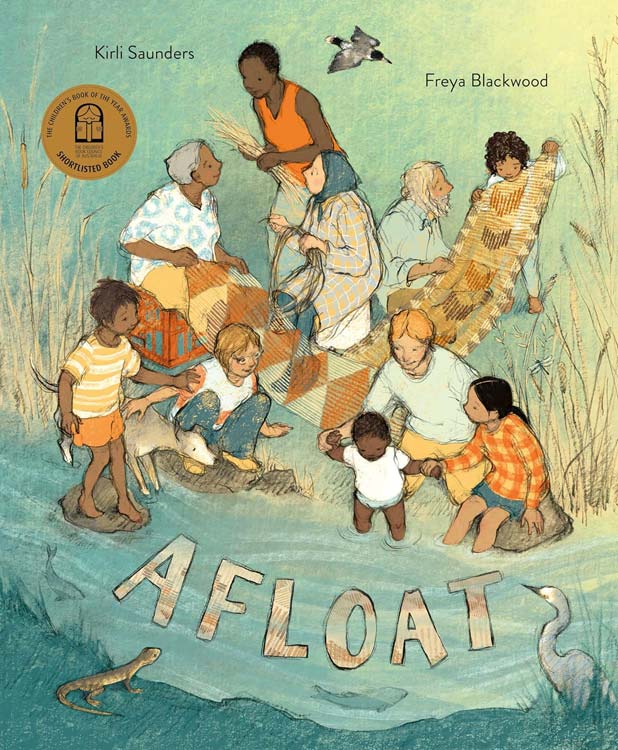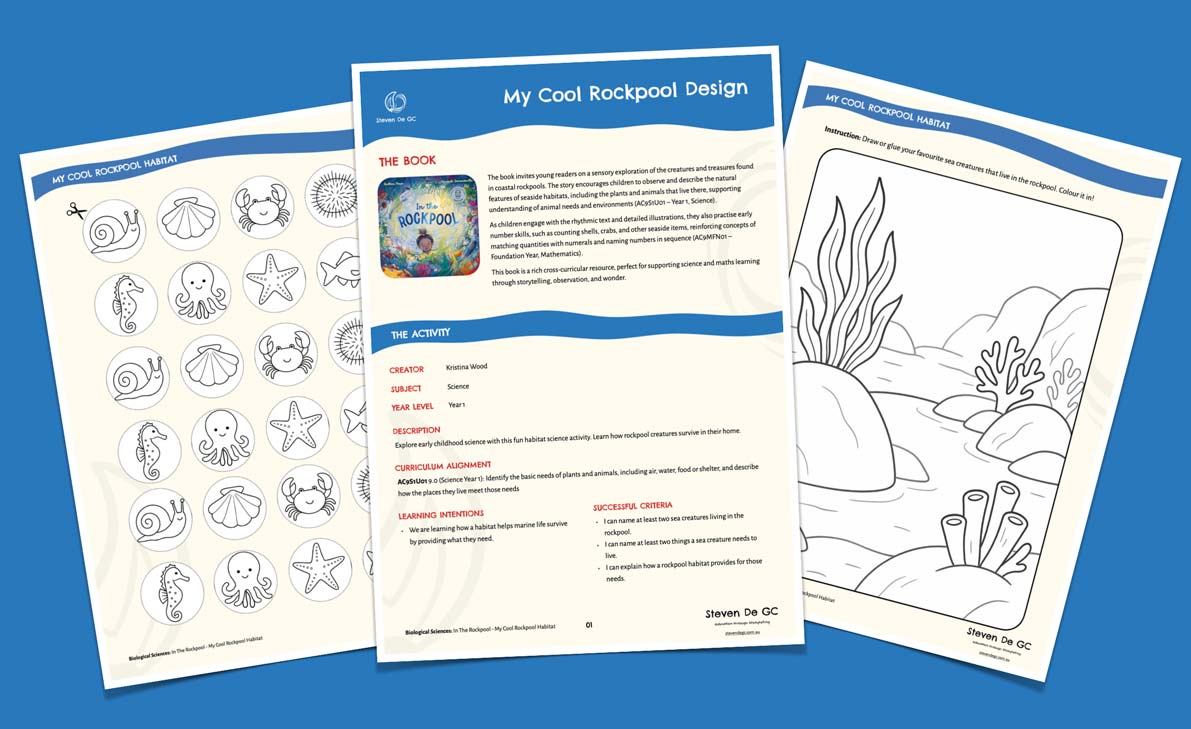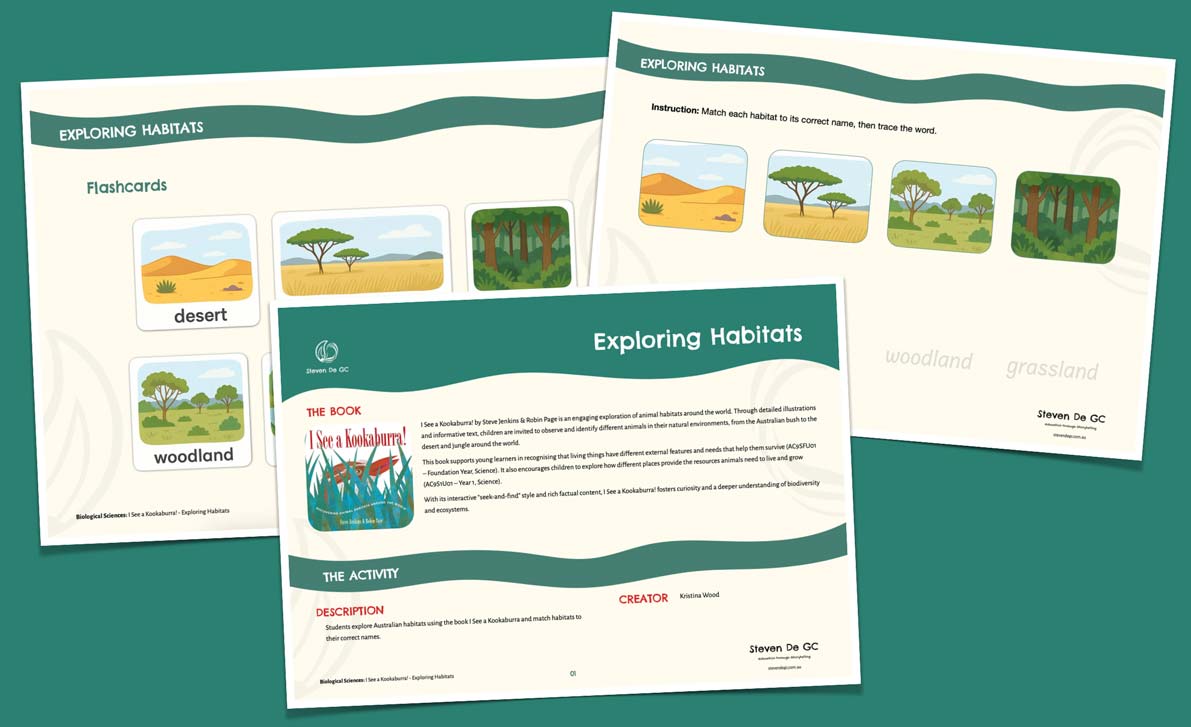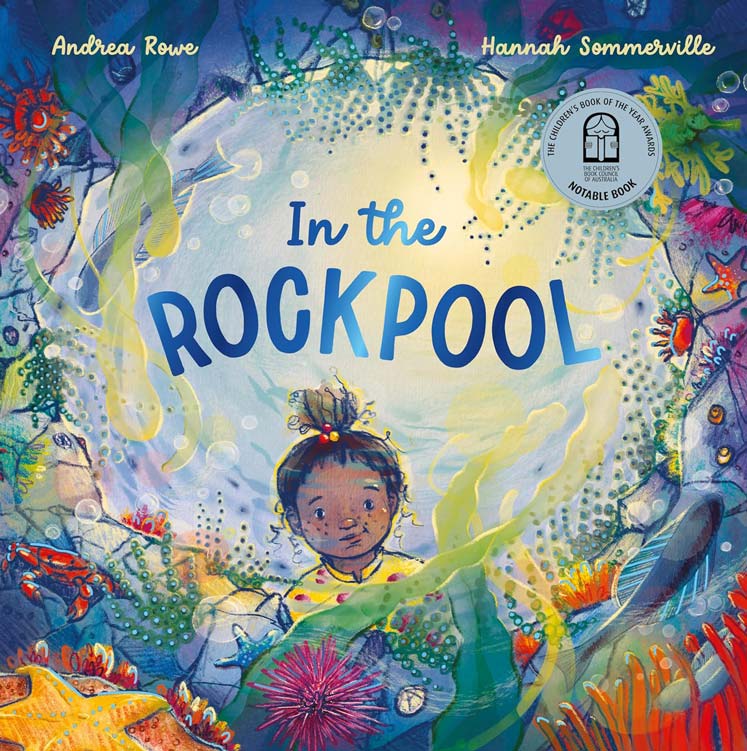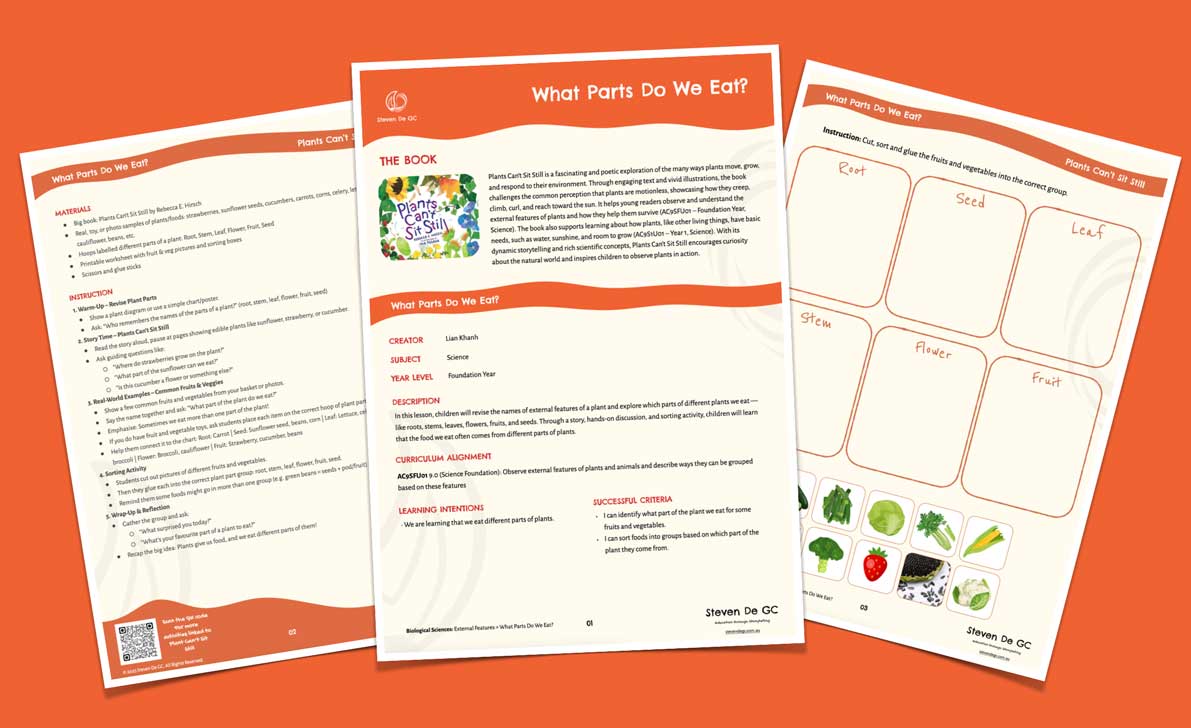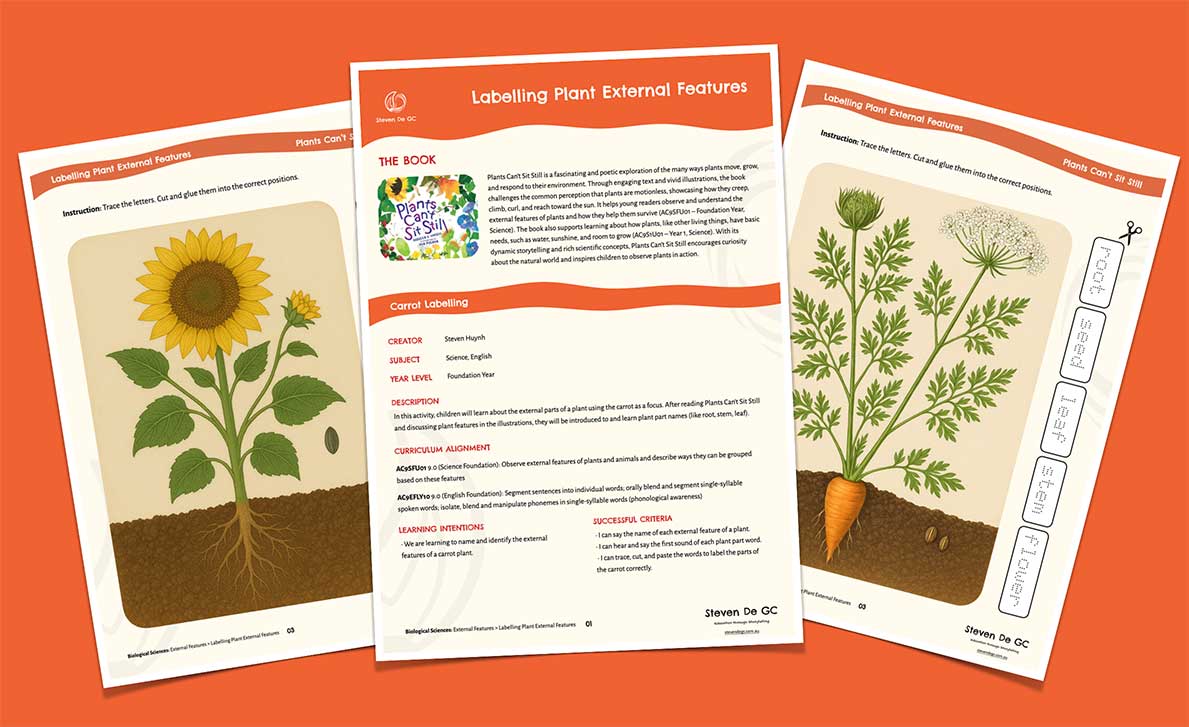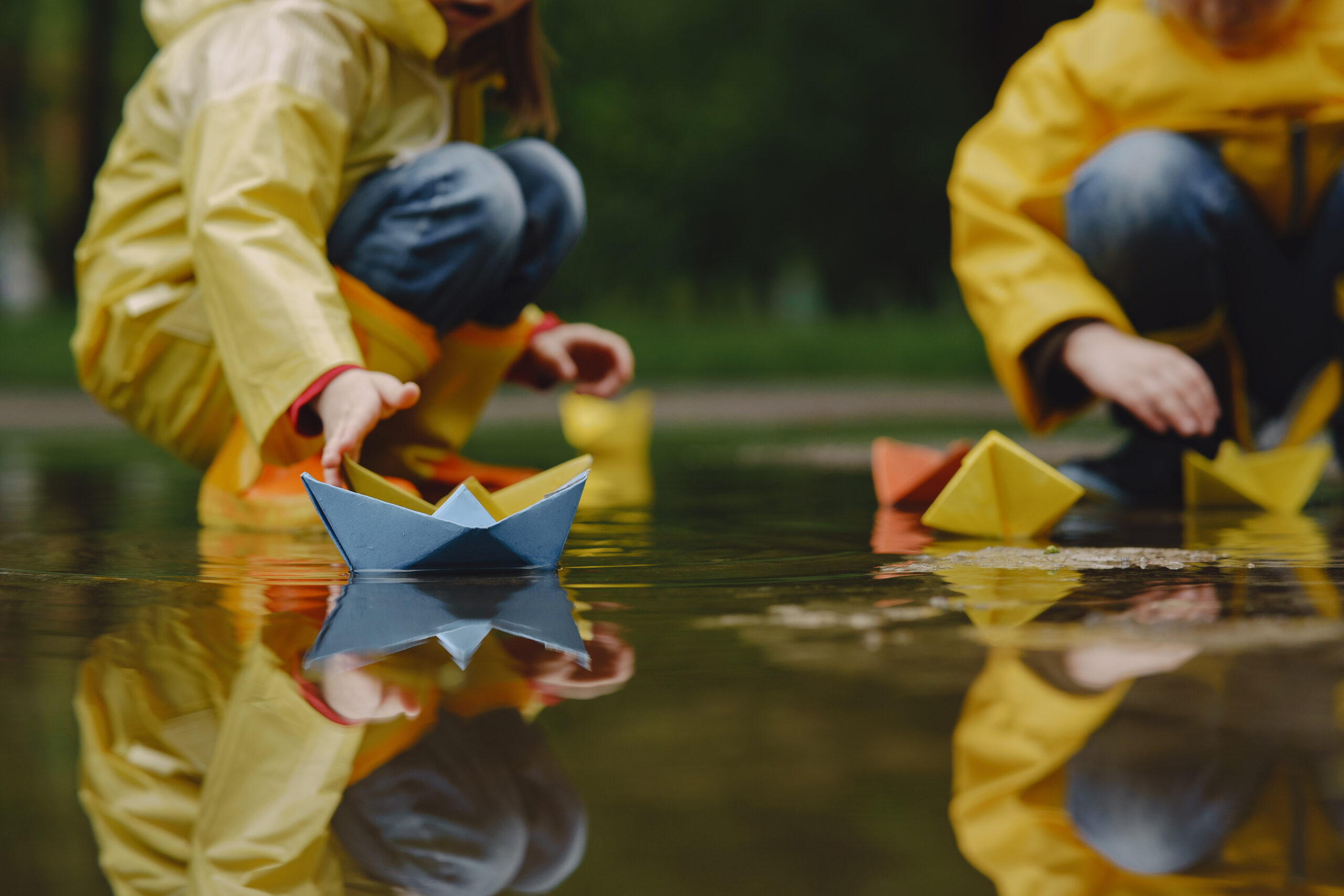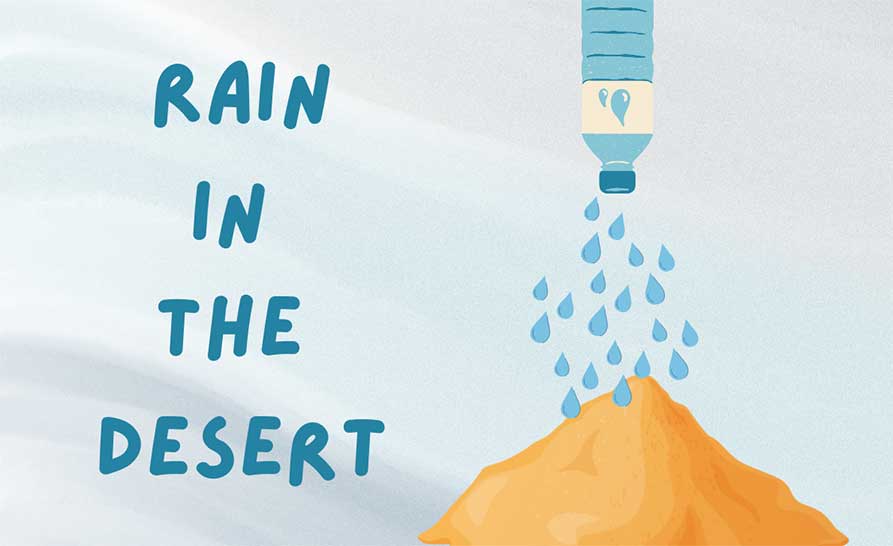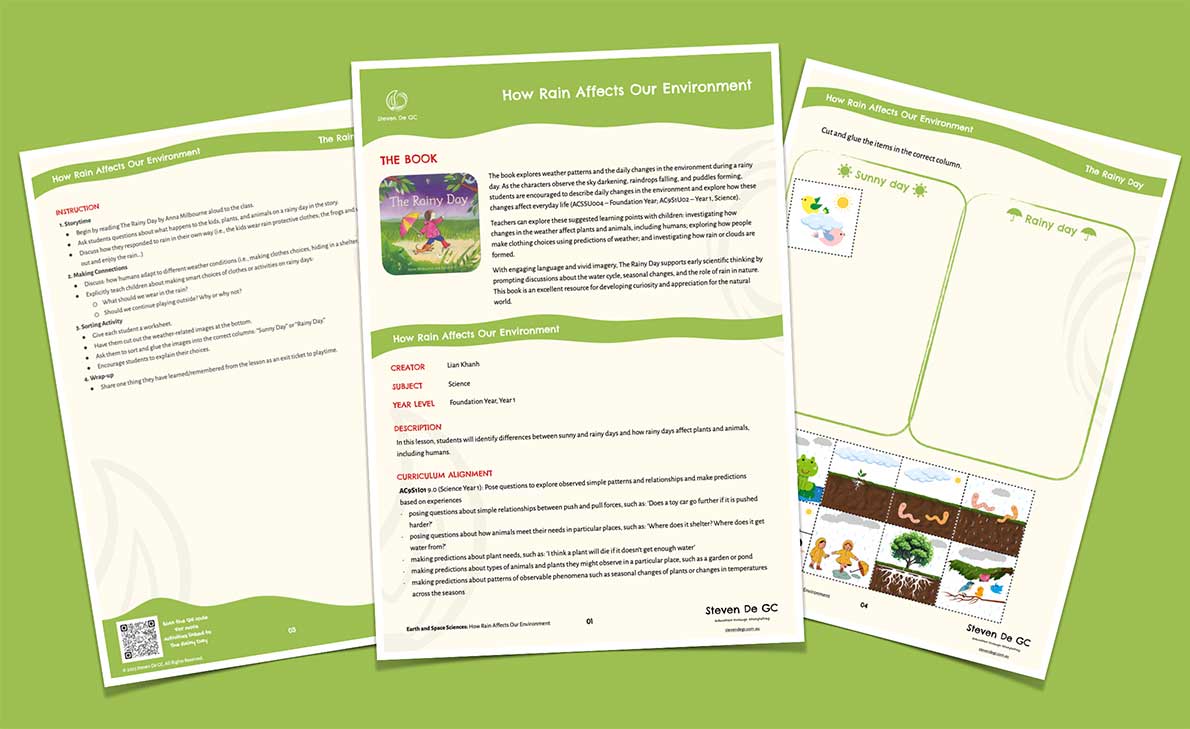Science
Explore Science Books, Activities and Articles for Kids
- Discover a world of wonder with our curated science books for kids, hands-on science activities, and engaging science articles for kids designed for Foundation (age 5), Year 1 (age 6) and Year 2 (age 7) learners. Our resources help children explore core science topics through storytelling, play and investigation.
- From exploring the external features of plants and animals, understanding how objects move, and recognising basic needs and habitats, to observing seasonal changes, experimenting with forces and materials, listening to sounds, and learning about the solar system—there’s something here for every young scientist.
- Perfect for teachers and parents, our science collection supports the Australian Curriculum while sparking curiosity in early learners.
Topics in this subject
-
Afloat
Written by Kirli Saunders
Illustrated by Freya Blackwood
Published by Little Hare Books
Theme/topic: Culture, First Nations, Identity, Producing, Sustainability, and Weaving
The book is a poetic and reflective story that gently explores connection to Country, identity, and community through the metaphor of water and weaving. Rooted in Aboriginal perspectives, the text provides a meaningful opportunity to learn about weaving as a cultural practice that strengthens identity and builds unity within community (AC9HP2P01 – Years 1 and 2, Health and Physical Education).
The story also opens conversations around sustainability and traditional knowledge, showing how weaving products are crafted from native plants found in local environments (AC9TDE2K01, AC9TDE2K03 – Years 1 and 2, Design and Technologies). By recognising the environmental sources and cultural significance of materials, Afloat supports an appreciation for First Nations practices and their role in caring for Country.
3 Fun Early Years Science Activities about Australian Habitats & Animal Needs
Discover fun Australian habitats and animal needs activities for early years classrooms. Engage kids with hands-on learning and practical science ideas!
My Cool Rockpool Habitat
📔 In The Rockpool by Andrea Rowe• We are learning how a habitat helps marine life survive by providing what they need.
Exploring Magnificent Habitats with I See a Kookaburra
📔 I See a Kookaburra! by Steve Jenkins• I am learning different habitats found in Australia.
In The Rockpool
Written by Andrea Rowe
Illustrated by Hannah Sommerville
Published by Little Hare Books
Theme/topic: Counting, Habitats, and Ocean
The book invites young readers on a sensory exploration of the creatures and treasures found in coastal rockpools. The story encourages children to observe and describe the natural features of seaside habitats, including the plants and animals that live there, supporting understanding of animal needs and environments (AC9S1U01 – Year 1, Science).
As children engage with the rhythmic text and detailed illustrations, they also practise early number skills, such as counting shells, crabs, and other seaside items, reinforcing concepts of matching quantities with numerals and naming numbers in sequence (AC9MFN01 – Foundation Year, Mathematics).
This book is a rich cross-curricular resource, perfect for supporting science and maths learning through storytelling, observation, and wonder.
Engaging Science Activities for Kids: Exploring the World Around Them
Looking for engaging science activities for young children? This collection offers resources for exploring the human body, animal habitats, and the amazing lives of plants.
What Parts Do We Eat?
📔 Plants Can’t Sit Still by Rebecca Hirsh• We are learning that we eat different parts of plants.
Labelling Plant External Features
📔 Plants Can’t Sit Still by Rebecca Hirsh• We are learning to name and identify the external features of a carrot plant.
Who am I?
📔 I See a Kookaburra! by Steve Jenkins• We are learning to identify and describe the external features of Australian bush animals.
My Body Parts
📔 Here are My Hands by Bill Martin and John Archambault• Students will identify different external body parts and their functions.
Plants Can’t Sit Still
Written by Rebecca Hirsh
Illustrated by Mia Posada
Published by Millbrook Picture Books
Theme/topic: Basic needs, External features, and Vocabulary expansion
Plants Can’t Sit Still is a fascinating and poetic exploration of the many ways plants move, grow, and respond to their environment. Through engaging text and vivid illustrations, the book challenges the common perception that plants are motionless, showcasing how they creep, climb, curl, and reach toward the sun. It helps young readers observe and understand the external features of plants and how they help them survive (AC9SFU01 – Foundation Year, Science). The book also supports learning about how plants, like other living things, have basic needs, such as water, sunshine, and room to grow (AC9S1U01 – Year 1, Science). With its dynamic storytelling and rich scientific concepts, Plants Can’t Sit Still encourages curiosity about the natural world and inspires children to observe plants in action.
Here are My Hands
Written by Bill Martin and John Archambault
Illustrated by Ted Rand
Published by Square Fish
Theme/topic: External features
Here Are My Hands by Bill Martin and John Archambault is a rhythmic and engaging picture book that celebrates the different parts of the human body and their functions. Through simple, repetitive text and vibrant illustrations, young readers are encouraged to recognise their own external features and explore their purposes, such as hands for clapping, feet for running, and eyes for seeing (AC9SFU01 – Foundation Year, Science).
This book fosters body awareness, supports early language development, and provides opportunities for interactive learning, making it a wonderful resource for exploring how our bodies help us engage with the world around us.
I See a Kookaburra!
Written by Steve Jenkins
Illustrated by Robin Page
Published by Houghton Mifflin Children
Theme/topic: External features and Habitats
I See a Kookaburra! by Steve Jenkins & Robin Page is an engaging exploration of animal habitats around the world. Through detailed illustrations and informative text, children are invited to observe and identify different animals in their natural environments, from the Australian bush to the desert and jungle around the world.
This book supports young learners in recognising that living things have different external features and needs that help them survive (AC9SFU01 – Foundation Year, Science). It also encourages children to explore how different places provide the resources animals need to live and grow (AC9S1U01 – Year 1, Science).
With its interactive “seek-and-find” style and rich factual content, I See a Kookaburra! fosters curiosity and a deeper understanding of biodiversity and ecosystems.
Science Comes Alive! How Stories Help Young Learners Explore Weather
Explore three captivating children’s books with hands-on activities that introduce young learners to the wonders of weather and its impact on the world around them. These beautifully illustrated stories bring rainy days, clouds, and seasonal changes to life.
Rain in the Desert
📔 Big Rain Coming by Katrina Germein• We are learning about the importance of rain for people, animals, and the environment in the outback of Australia.
How Rain Affects Our Environment
📔 The Rainy Day by Anna Milbourne• We are learning how rainy weather affects plants, animals, and people.
Little Cloud Adventure
📔 Little Cloud by Eric Carle• We are learning to observe how clouds change shape and move in the sky.
AC9AVA2C01 (Visual Arts – Year 1, Year 2) AC9AVAFC01 (Visual Arts – Foundation) AC9S1I01 (Science – Year 1) AC9S1U02 (Science – Year 1) ACAVAM106 (Visual Arts – Foundation, Year 1, Year 2) ACAVAM107 (Visual Arts – Foundation, Year 1, Year 2) ACSHE013 (Science – Foundation) ACSIS011 (Science – Foundation) ACSIS014 (Science – Foundation) ACSSU004 (Science – Foundation)Little Cloud
Written & illustrated by Eric Carle
Published by World of Eric Carle
Theme/topic: Weather changes
Little Cloud by Eric Carle is a beautifully illustrated story that follows a small cloud as it drifts across the sky, changing into different shapes before joining other clouds to bring rain. The book encourages young readers to observe and explore daily changes in weather patterns through clouds and understand clouds are part of the water cycle (ACSSU004 – Foundation Year, Science; AC9S1U02 – Year 1, Science).
Through Carle’s signature collage-style illustrations and simple yet engaging text, Little Cloud inspires children to use their imagination while learning about the natural world. The book also provides opportunities for discussions about how clouds form, change, and contribute to the environment, making it a wonderful resource for early science learning.
The Rainy Day
Written by Anna Milbourne
Illustrated by Sarah Gill
Published by Usborne Picture Books
Theme/topic: Vocabulary expansion and Weather impacts
The book explores weather patterns and the daily changes in the environment during a rainy day. As the characters observe the sky darkening, raindrops falling, and puddles forming, students are encouraged to describe daily changes in the environment and explore how these changes affect everyday life (ACSSU004 – Foundation Year; AC9S1U02 – Year 1, Science).
Teachers can explore these suggested learning points with children: investigating how changes in the weather affect plants and animals, including humans; exploring how people make clothing choices using predictions of weather; and investigating how rain or clouds are formed.
With engaging language and vivid imagery, The Rainy Day supports early scientific thinking by prompting discussions about the water cycle, seasonal changes, and the role of rain in nature. This book is an excellent resource for developing curiosity and appreciation for the natural world.
Big Rain Coming
Written by Katrina Germein
Illustrated by Bronwyn Bancroft
Published by Picture Puffin
Theme/topic: Days of the week and Weather impacts
Big Rain Coming by Katrina Germein is a beautifully written and atmospheric story that captures the anticipation of rainfall in a remote Australian Indigenous community. Throughout the week, the land remains dry, and the people wait patiently for the relief that the rain will bring. The book helps students explore observable weather changes and how they impact the environment and daily life (ACSSU004 – Foundation Year; AC9S1U02 – Year 1, Science). It also help kids compare and recognise the extensive knowledges of daily and seasonal changes in weather patterns and landscape held by First Nations Australians.
The timely, predictable text encourages children to recognise and describe the sequence of the days of the week, supporting their understanding of time (ACMMG007, AC9MFM02 – Foundation Year, Mathematics). With its rich language and evocative illustrations, Big Rain Coming fosters curiosity about weather patterns and seasonal changes while promoting discussions about patience, resilience, and connection to the land.


